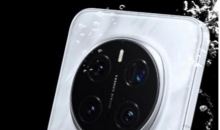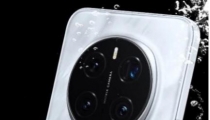Printing Past & Present: The Development of Printer Technology
Sep 11, 2018 09:41
From good old stencils and woodblock printing to HP printer cartridges, printer technology has come a long way in the last few thousand years. With seals and stencils, printing used to be just a slightly more effective way of copying text than by handwriting, but with technological innovations like HP printer cartridges and electricity, it has evolved into an impressive industry.
The Invention of Printing
The first type of printing to be used on paper, rather than cloth or other mediums, was woodblock printing, invented in China around 1800 years ago. As you can imagine, while prioritising historical, religious, and encyclopedic texts, the technology spread quickly across East Asia and books became cheaper and cheaper. Knowledge is power, so the wealthy would often have private libraries. But this technology continued to develop and rise in importance, and books quickly changed shape from what was easiest to handwrite on to what was easiest to print.
The Printing Press
While carving wood and metal and ceramics into a mirror image of the text or picture you wanted to copy was fun, probably, it was also extremely time consuming. The Moveable Type came along about 800 years after the woodblock, and completely changed the game. Flexibility in printing was suddenly available, but without a literate population to read the books, it wasn’t much use. Yet.
An amalgamation of the best parts of printer technology of the time, the printing press was invented around 550 years ago in Europe, and the mass production of books was suddenly possible. Inks, still far from the HP printer cartridges we know and love, developed concurrently, and as you might expect, paper did too. From there it snowballed into a literate population and inexpensive books, no longer forced to prioritise knowledge and religion, but allowing fiction and art to rise as well.
Colour Printing
Back in the day, printed pictures resembled a colouring book, but it was inefficient to hand-colour every single image, so things had to change. After all, colouring between the lines is tough. There were some colour printing options, for one colour at a time, but nothing effective enough to entirely replace the delicate operation of hand-colouring. The development of inks allowed for better colour printing techniques, but it wasn’t until electricity allowed for the invention of the automatic printers we’re more familiar with, that colour printing really started to work. None of the previous colour printing technologies could hold a candle to the results of HP printer cartridges of today.
The Birth and Death of the Fax Machine
Ask someone under the age of 25 how to use a fax machine today, and it’s unlikely that they’ll be able to tell you. In much the same way that the rotary dial phones are too slow and outdated to be worth having now days, there’s no reason to send a document through a fax machine when you can scan and email a photo of it faster. Printers nowadays tend to include scanners within the same machine, and even eliminate the middle guy, giving you the ability to scan straight to email
Modern Printers
Most homes now have at least one printer in them, and it’s hard to imagine a business operating without one - a far cry from the woodblock technology that meant you could wait a decade to finally receive a copy of a book. Ink is inexpensive at local office supply stores, and HP printer cartridges can be easily switched out when the ink runs out. Paper is cheap, and, surprisingly, cloth printing is still around! Even 3D printing gets less expensive by the minute - we are living in a golden age of printer technology.







































































